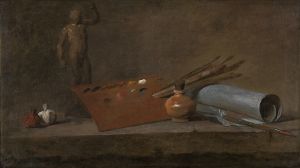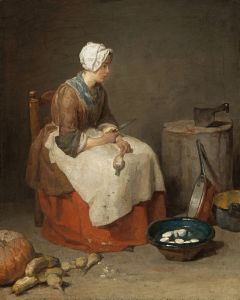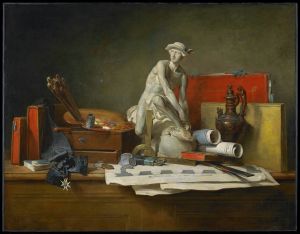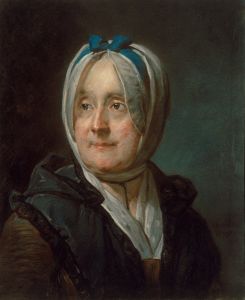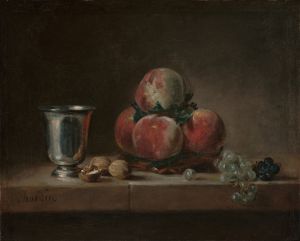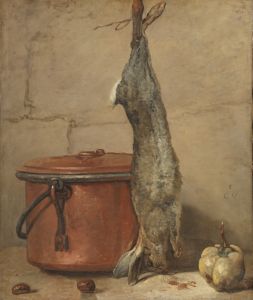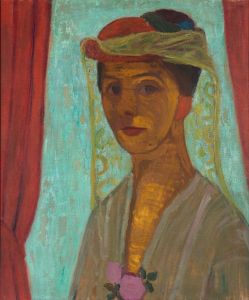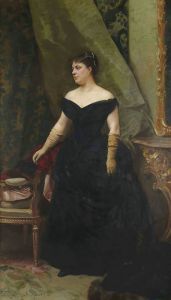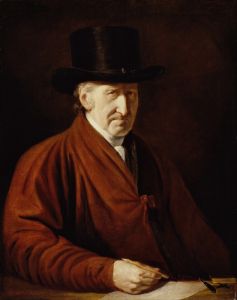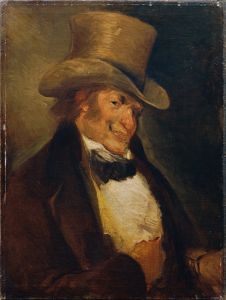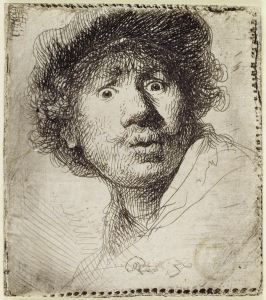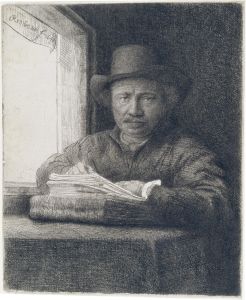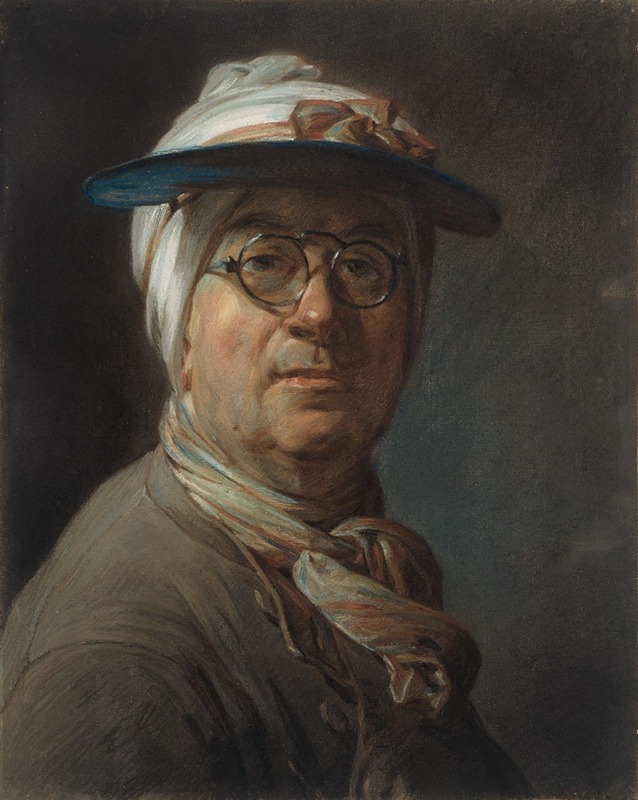
Self-Portrait with a Visor
A hand-painted replica of Jean Siméon Chardin’s masterpiece Self-Portrait with a Visor, meticulously crafted by professional artists to capture the true essence of the original. Each piece is created with museum-quality canvas and rare mineral pigments, carefully painted by experienced artists with delicate brushstrokes and rich, layered colors to perfectly recreate the texture of the original artwork. Unlike machine-printed reproductions, this hand-painted version brings the painting to life, infused with the artist’s emotions and skill in every stroke. Whether for personal collection or home decoration, it instantly elevates the artistic atmosphere of any space.
Jean Siméon Chardin, a prominent French painter of the 18th century, is renowned for his still lifes and genre paintings. One of his notable works is "Self-Portrait with a Visor," which exemplifies his skill in capturing the subtleties of human expression and character.
"Self-Portrait with a Visor" was painted in 1771, during the later years of Chardin's career. This period was marked by a shift in his focus from still lifes to portraiture, particularly self-portraits. The painting is an oil on canvas and measures approximately 45 x 37 cm. It is currently housed in the Louvre Museum in Paris, France.
In this self-portrait, Chardin presents himself wearing a visor, a type of headgear that was commonly used by artists to shield their eyes from the glare of light while working. This practical accessory underscores Chardin's identity as a dedicated and meticulous artist. The visor also adds a unique element to the composition, drawing attention to his eyes and the intensity of his gaze.
Chardin's self-portrait is characterized by its subdued color palette and soft, diffused lighting. The background is kept simple and unobtrusive, allowing the viewer to focus entirely on the artist's face and expression. Chardin's use of light and shadow is masterful, creating a sense of depth and realism that brings the portrait to life.
The expression on Chardin's face is one of quiet introspection. His slightly furrowed brow and the thoughtful look in his eyes suggest a moment of contemplation, perhaps reflecting on his long and successful career. This introspective quality is a hallmark of Chardin's self-portraits, which often convey a sense of personal reflection and humility.
Chardin's technique in "Self-Portrait with a Visor" is notable for its precision and attention to detail. The texture of the skin, the folds of the clothing, and the subtle play of light on the visor are all rendered with remarkable skill. This meticulous approach is typical of Chardin's work, which is celebrated for its technical excellence and understated elegance.
Throughout his career, Chardin was highly regarded by his contemporaries and received numerous accolades. He was admitted to the prestigious Académie Royale de Peinture et de Sculpture in 1728 and enjoyed the patronage of influential figures, including King Louis XV. Despite the changing tastes of the art world, Chardin remained true to his own artistic vision, focusing on the beauty of everyday objects and scenes.
"Self-Portrait with a Visor" is a testament to Chardin's enduring talent and his ability to capture the essence of his subjects with honesty and sensitivity. It offers a glimpse into the mind of an artist who, despite his modesty, left an indelible mark on the history of art. Today, Chardin is remembered as one of the great masters of 18th-century French painting, and his works continue to be admired for their timeless beauty and technical brilliance.





